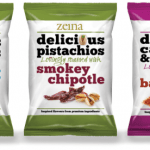
Grocery spending is a key measure when assessing the state of a country’s economy. Delving deeper shows young millennials now exceed the older generations when it comes to spending on food and beverages. It seems the young are very keen on buying their food whilst the more elderly are holding onto it so as to manage bills and their finances.
The latest IRI Consumer Connect™ survey and IRI’s “Early View 2019: Food and Beverage Trends” report is throwing up some useful insights into how various populations in the USA are spending and saving their hard won wages when it comes to food shopping. Incidentally, IRI is a Chicago based firm which looks at big data market research.
The Wider Economy In The USA And How It Affects Consumer Spending On Food
Generally speaking the findings in these reports concerning feeding a population are overlaid by the general state of the economy. Perhaps one of the main aspects is a low unemployment rate generally which means there is confidence in spending, especially for younger millennials compared to older folks. Food inflation did not rise that greatly being only a 1.7 per cent increase in the first quarter. Even though the USA economy grew in Q1 2019, just less than half the adult population has been tightening their belts because they are feeling a squeeze on their wallets and purses. Irrespective of politics, the greatest increases in inflation between Q1 2018 and Q1 2019 occurred in raw fruit and vegetables of 2.7 per cent. Likewise, soft drinks and nonalcoholic beverages also saw a high rate of inflation of 2.5 per cent.
Millennials are all those born in 1990 and afterwards whilst baby boomers are at the other end of the age range. They are a population who are interested in food for its green take and ask questions about sustainability, satisfying vegetarian and vegan principles and meeting animal welfare standards.
Joan Driggs, VP of Content and Thought Leadership for IRI, is quoted:-
“Younger Millennials have been lulled by the historically low unemployment rates, which is boosting their overall confidence and loosening their wallets,” said Joan Driggs, vice president of Content and Thought Leadership, IRI. “At the other end of the spectrum, many Baby Boomers, retirees and seniors are concerned about their retirement savings due the volatile stock market this year and are watching their expenses more carefully. In recent years, Millennials have been less optimistic than older consumers and were spending less. We are now seeing a role reversal that is impacting spending on edibles across the board.”
How The Ages Are Spending On Food
Another finding from the IRI survey was that food inflation in the USA dropped or softened in the first three months of 2019 from 2.2 per cent in 2018 to 1.7 per cent. However, there are some who are not opening their purses any wider. The ‘Early View 2019’ report compared spending between March 2018 and March 2019. It states that younger millennials increased spending by 21.5 per cent whereas retired and senior people reduced spending by 3.8 per cent. Millennials (both younger and older) are keen to seek value in spending and match the older generation in making sure money is spent wisely to keep within a certain budget. According to a key table, all age groups are purchasing private label food as a very good way of keeping costs down. There is also a comment in the reports that similar percentages of millennials and retirees are trying new, lower-priced brands too.
| Younger Millennials | Older Millennials | Gen X | Younger Boomers | Older Boomers | Retirees and Seniors | |
| Buy private label | 74% | 88% | 87% | 83% | 79% | 77% |
| Try new, lower-priced brand | 70% | 80% | 79% | 73% | 69% | 59% |
| Visit multiple retailers | 60% | 61% | 57% | 57% | 54% | 48% |
| Download coupons from retailer/ manufacturer website | 46% | 62% | 60% | 56% | 48% | 39% |
The Gen Z is perhaps one of the most powerful spending groups. This group can spend $143 billion. They are shifting demographic which matures relatively soon and this group’s purchasing habits may well alter even further. Some of the trends are described below.
Less Meat And More Plants Are being Eaten As Food
The IRI report reveals that more plant-based foods are being consumed and the whole sector is continuing its momentum. For product developers this means there is likely to be a shift away from meat based products towards dishes which favour vegetarian options. It might not mean vegetarianism is on the rise but there is a significant shift to this type of eating if trends from other sources are considered. Up to 60 per cent of consumers and buyers would consider reducing their meat intake and over half of the group surveyed thought their ideal meal contained more plant-based food than they currently consumed intake. It appears almost 80 per cent of all millennials now eat meat alternatives with 30 per cent adopting a more plant based diet.
In a more detailed examination of the sales in Q1 2019, sales of foods generally rose in January only to slow down in the next two months. What is termed as edible growth is shown by an increase in food buying in the West (4.1 %) and Plains (3%) regions whilst the Northeast (1.4%) and South Central (1.2%) had the slowest growth. The beverage and liquor sales were actually the best performing sectors in January before dropping away.
Storewide department sales trends are mixed, according to IRI. Beverage and liquor were top-performing departments in the first quarter, while the general food and refrigerated departments, which experienced 3.7% and 3.2% growth in January, declined by 1.5% and 1.1%, respectively, in March 2019.
Sustainable Food Sourcing
Sustainably sources food is very important to all consumers according to the report. In all the demographics, 78 per cent of consumers were more interested in purchasing products that has some type of sustainability claim. In grocery terms, sales of such food truly rose significantly. Back in 2018, the market for sustainable food products are $113.9 billion sales which was a 29 per cent rise on 2013. Business analysts that that by 2023, sales will exceed $140 billion.
What does it all mean ?
Consumer packaged goods businesses can use the figures to understand who they need to target when it comes to the type of food offering. More vegetarian/vegan foods, more options with plant-based ingredients which also offer value for money seem to be an important route to follow. Might seem obvious but a lack of hard facts and figures has confused decision making in recent years.
To conclude, Joan Driggs stated:-
“The latest generational spending habits combined with increased interest in plant-based and sustainable products, opens up an array of new opportunities for CPG marketers.”
“To be successful marketers must consider the importance of social media reviews, create fresh, relatable content and be authentic when targeting younger consumers. This doesn’t mean marketers should lose sight of older consumers, who still have the greatest purchasing power, but marketers must be very savvy and develop personalized, targeted marketing campaigns that appeal to the various generations of shoppers.”


Leave a Reply